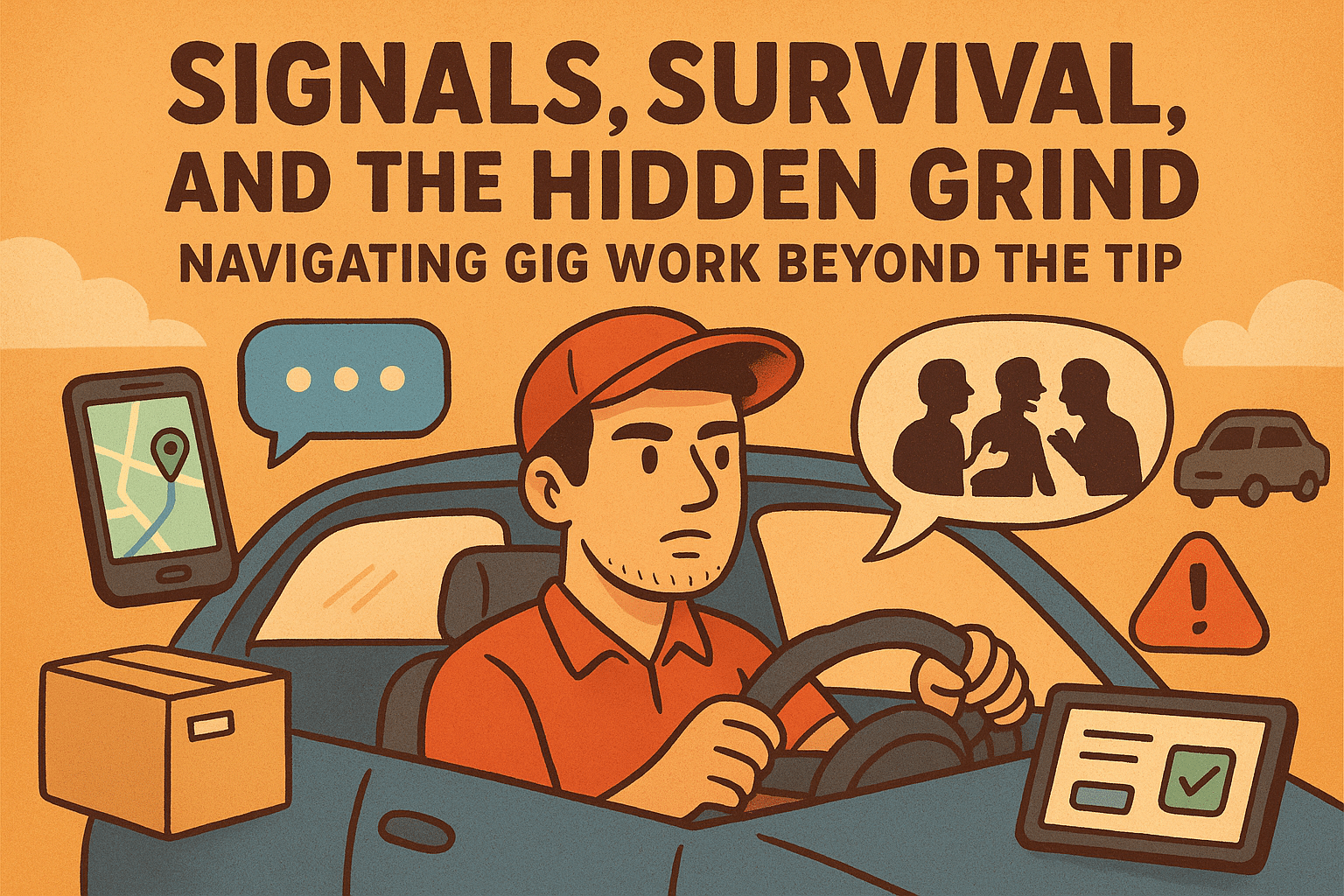The conversation opens light—Halloween energy, audio gremlins, and shoutouts—but quickly gets to the heart of gig work: community and survival. We talk through why tight-knit groups like our Telegram chat matter in a market shaped by shifting policies, unpredictable demand, and platform opacity. Drivers need more than hustle; they need signal. In the group, people trade what’s popping in their city, which restaurants stall, whether a warehouse’s afternoon blocks run long, and what new tools are worth the download. It’s not just tips; it’s social proof and sanity checks. We’ve all arrived at a pickup where the tablet “never got the order,” or watched an ETA stretch while the meter doesn’t. Hearing how others handle a slow Tuesday or a surprise promotion turns the work from guesswork to pattern recognition. That’s the thread for everything that follows: when information is scarce, community fills the gap and reduces the risk tax you pay as an independent contractor.
From there, we dig into workflow and mindset—how behind-the-scenes processes shape the front-end grind. The most compelling content lately isn’t bravado on giant tips; it’s the back-office reality of tablets, routing screens, and restaurant batching logic. Seeing the merchant’s dashboard explains why your pickup jumps from “ready in 10” to “not in system.” Similarly, production stories—factory lines for diapers or the layered veneers inside theater seats—remind us how many invisible steps exist between raw inputs and a final product. Gig platforms are their own assembly lines, turning demand into payouts through algorithms that adapt faster than regulation. If you understand the hidden conveyor belt—how Amazon Flex counts block time, where DoorDash queues throttle—you cut waste and earn more. That’s the difference between waiting 15 minutes for a cold sandwich and flipping two orders in the same window.
Amazon Flex is a perfect example of where knowledge pays. A route spanning Spring Hill and Murfreesboro looks like 200 miles at a glance and feels unfair at $83. But the real calculus is block pay versus energy cost, unpaid deadhead after the last stop, and how many minutes you finish before the block ends. If your vehicle sips fuel—or better, you’re EV—you shift from per-mile fear to time arbitrage. Flex doesn’t pay return miles, so geographic spread matters, but so does your tolerance for rural pockets and lockbox delays. Many frustrations evaporate if you set a minimum hourly target and only book blocks that meet or beat it. And if you consistently draw long routes, ask whether it’s a station quirk, a specific start time, or a sorting issue. Flex can be profitable, but only if you treat it like logistics, not vibes: preload your charger map, avoid gas guzzlers, and carry a tight checklist for apartments, codes, and porch photos that reduce reattempts.
Policy and liability are no longer abstract; Lyft just sent New Jersey $19.4 million over misclassification assessments tied to unpaid unemployment and disability contributions. It’s a reminder that the ABC test in some states presumes you’re an employee unless all prongs say otherwise. Companies often settle without admitting employee status, but the money is real, and the precedent reshapes behavior. For drivers, the practical takeaway isn’t “W-2 tomorrow.” It’s knowing your ground truth: track miles, retain receipts, log wait times, and keep your filing clean. If states continue to enforce contributions retroactively, platforms will tweak pricing and incentives. That can mean more transparent per-minute rates, fewer arbitrary deactivations after customer disputes, or the opposite—harder acceptance metrics to contain costs. Your defense is meticulous recordkeeping and diversified income streams so policy shocks don’t sink your week.
Safety sits in the middle of all this. A clip where a delivery driver pepper-sprays a calm-looking dog sparks more than outrage; it surfaces the unwritten code of the doorstep. Homeowners should secure pets; drivers should pause, de-escalate, and ask for help before escalating force. Most dogs posture to protect territory; a slow step back and a clear request to the owner solves it. Pepper spray may violate platform rules and will almost certainly cost your account. The safest play: keep distance, never run, and use your voice. If a dog advances aggressively, then defend yourself. But act with prudence first. People love their pets, and the camera is always rolling.
On the opposite edge of the safety spectrum sit robots. Waymo reportedly passed a school bus with stop-arm deployed, then made an illegal U-turn near a DUI checkpoint in another clip. The questions are bigger than one mistake: who gets the ticket when there’s no driver, and how do we price harm when the operator is code? California will enable “autonomous vehicle noncompliance” notices sent to manufacturers starting July 2026, a start but not a deterrent if fines are trivial at corporate scale. The fi

